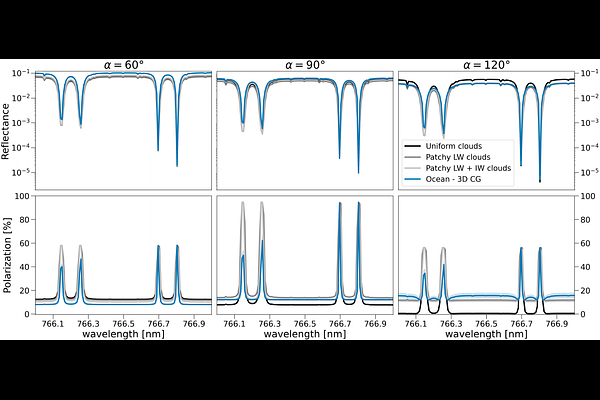Planet Earth in reflected and polarized light: II. Refining contrast estimates for rocky exoplanets with ELT and HWO

Planet Earth in reflected and polarized light: II. Refining contrast estimates for rocky exoplanets with ELT and HWO
Giulia Roccetti, Michael F. Sterzik, Julia V. Seidel, Claudia Emde, Mihail Manev, Stefano Bagnulo
AbstractThe characterization of nearby rocky exoplanets will become feasible with the next generation of telescopes, such as the Extremely Large Telescope (ELT) and the mission concept Habitable Worlds Observatory (HWO). Using an improved model setup, we aim to refine the estimates of reflected and polarized light contrast for a selected sample of rocky exoplanets in the habitable zones of nearby stars. We perform advanced 3D radiative transfer simulations for Earth-like planets orbiting G-type and M-type stars. Our simulations incorporate realistic, wavelength-dependent surface albedo maps and a detailed cloud treatment, including 3D cloud structures and inhomogeneities, to better capture their radiative response. These improvements are based on Earth observations. We present models of increasing complexity, ranging from simple homogeneous representations to a detailed Earth-as-an-exoplanet model. Our results show that averaging homogeneous models fails to capture Earth's full complexity, especially in polarization. Moreover, simplistic cloud models distort the representation of absorption lines at high spectral resolutions, particularly in water bands, potentially biasing atmospheric chemical abundance estimates. Additionally, we provide updated contrast estimates for observing rocky exoplanets around nearby stars with upcoming instruments such as ANDES and PCS at the ELT. Compared to previous studies, our results indicate that reflected light contrast estimates are overestimated by a factor of two when simplified cloud and surface models are used. Instead, measuring the fractional polarization in the continuum and in high-contrast, high-resolution spectra may be more effective for characterizing nearby Earth-like exoplanets. These refined estimates are essential for guiding the design of future ELT instruments and the HWO mission concept.